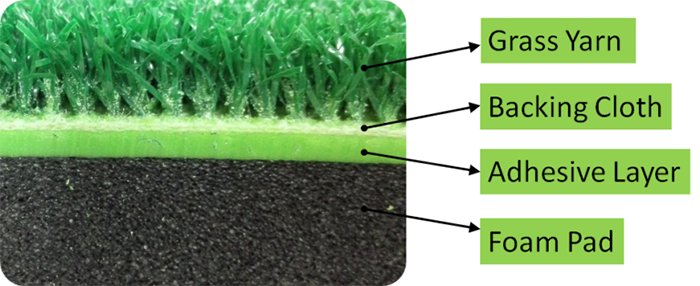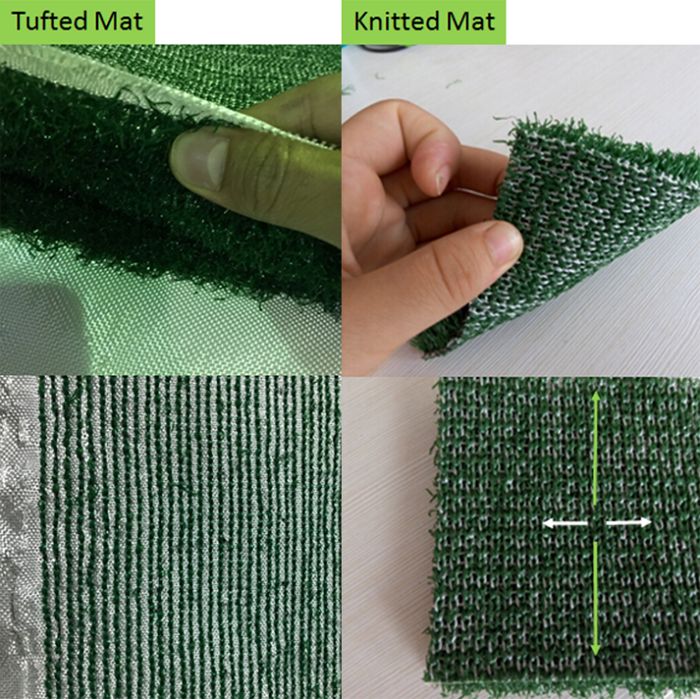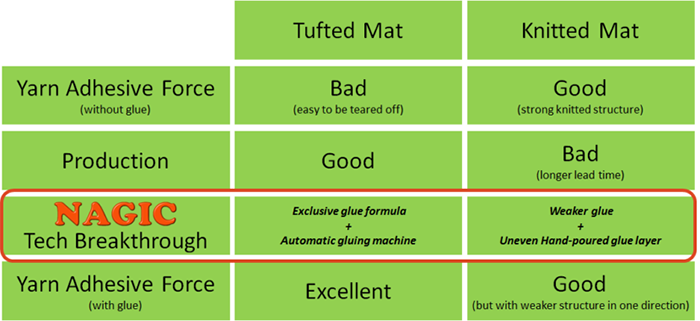MAT STRUCTURE

Basic mat structures contain four parts.
They are: 1) grass yarn; 2) backing cloth; 3) adhesive layer ;and 4) foam pad. In the whole production process, we tuft grass yarns onto the backing cloth and bind the turf with the foam pad with glue.
NAGIC golf driving range mats are manufactured through tufting process. Yet there is the other common kind of process called knitting. Specifically speaking, the main difference centers on how the yarns are structured.
To let you easily visualize, I post a comparison picture. On the left side, it's how NAGIC tufts grass yarns onto the backing cloth. On the right side, it's the knitted mat, in which manufacturers weave grass yarns to make them into a turf.
As a result of their processes, grass yarns of knitted mats are harder to tear off even without the glue. In addition, the knitted mats don't have backing cloth as NAGIC does.
So why did NAGIC choose developing the tufting process, rather than the knitting one? It's because of two drawbacks of knitting process.
1. The knitting process an inefficient production process with 2-times longer lead time with frequent machine breakdown.
2. The knitted structure makes it vulnerable in one direction. One direction of turf is strong and tight (green arrows), but the other (white arrows), weaved by only a few fibers, is weak and causes defects.
But how does NAGIC solve the problem of falling yarns on tufted mat, in the same time overcome the drawback of knitted mat?
And the answer is our strong PU glue formula. With the best glue, our tufted mats become the most durable tufted mats in the market. In the same time, they don't have the inherent weakness of the knitted mats.
Furthermore, we even developed and built our own automatic gluing machine, which solves the unstable quality problem of hand gluing. These two breakthroughs really give NAGIC golf driving range mats extremely strong yarn adhesive force and excellent quality control.
In the end, I summarize a comparison table as below for your understanding:

